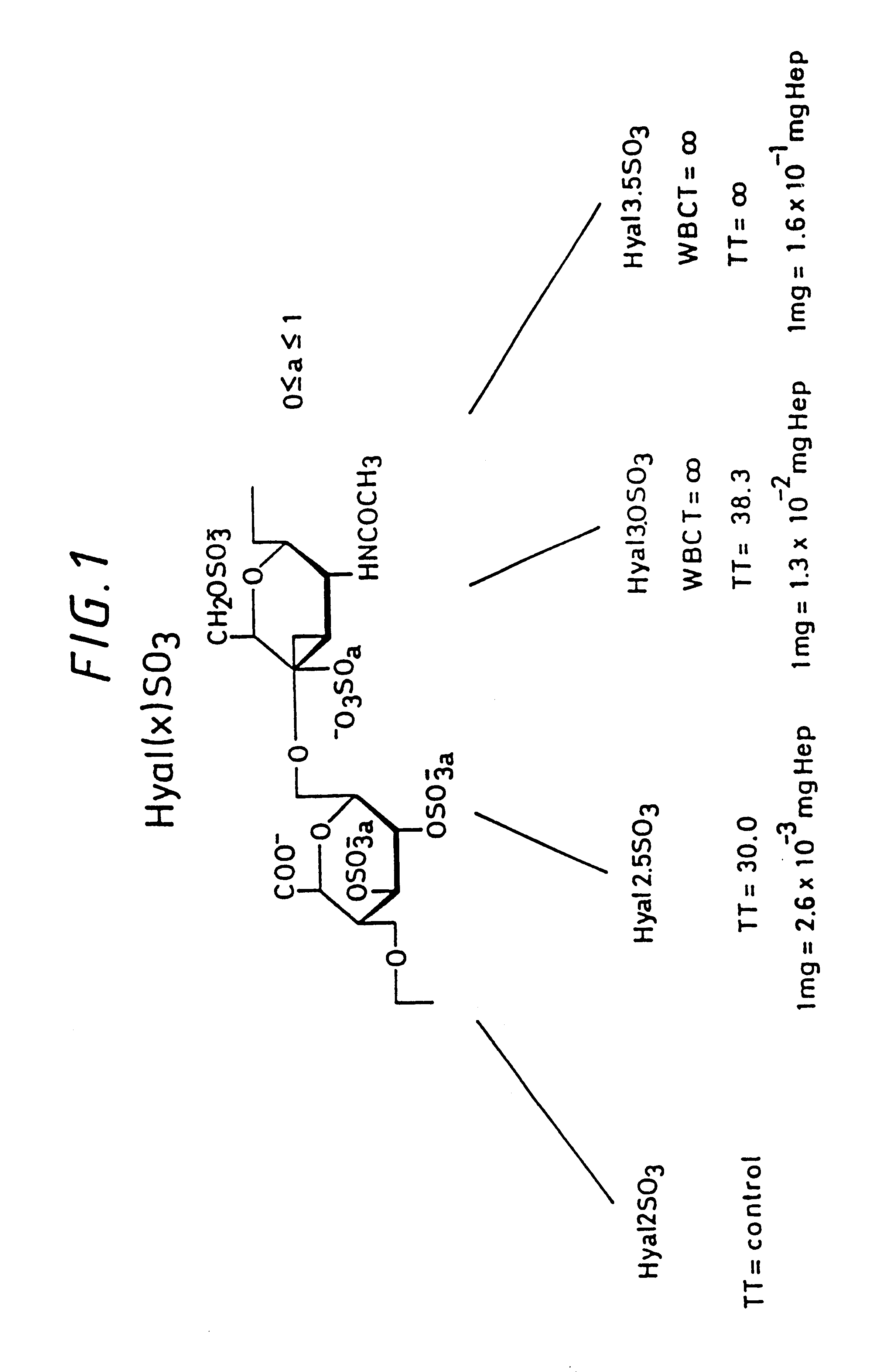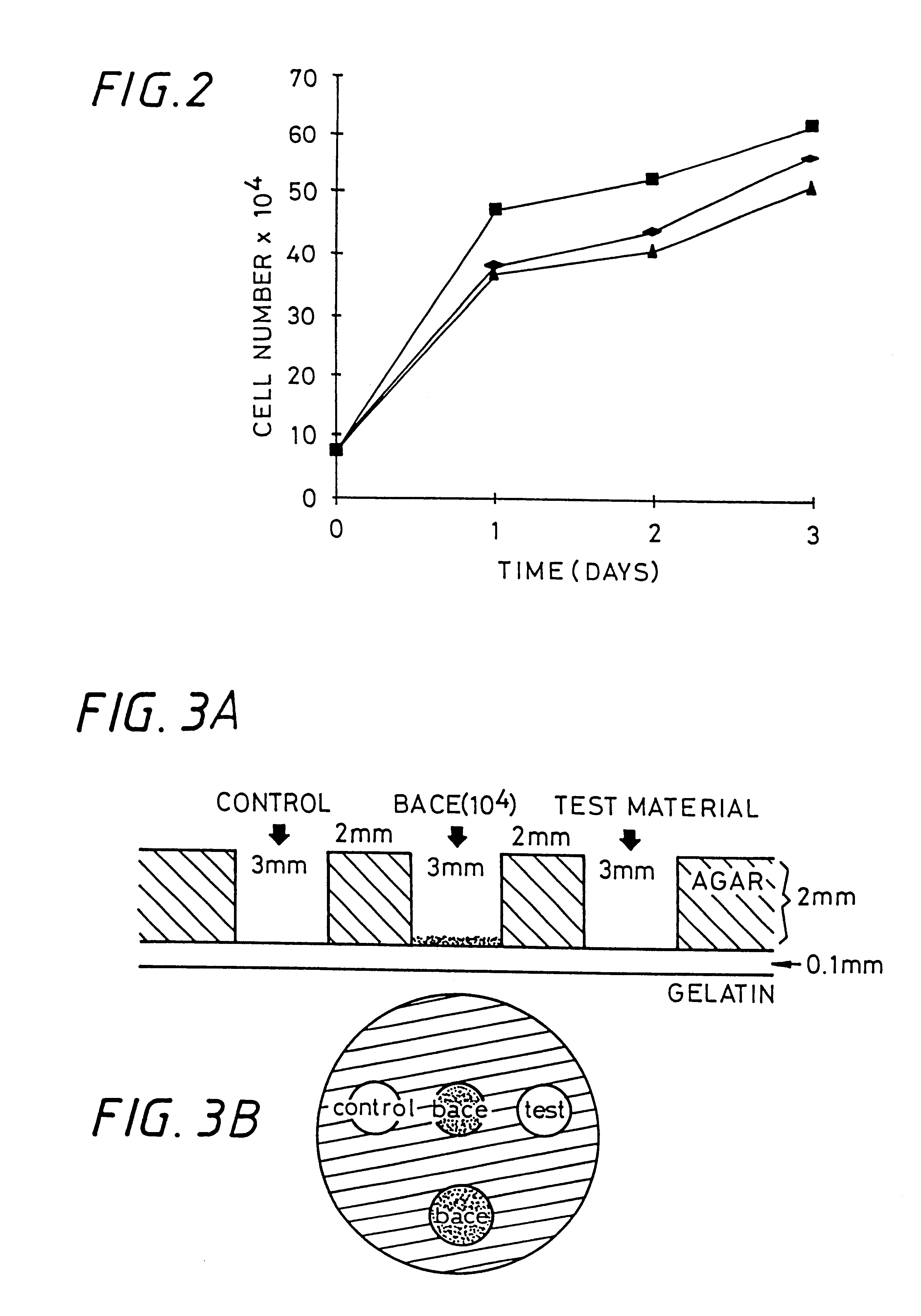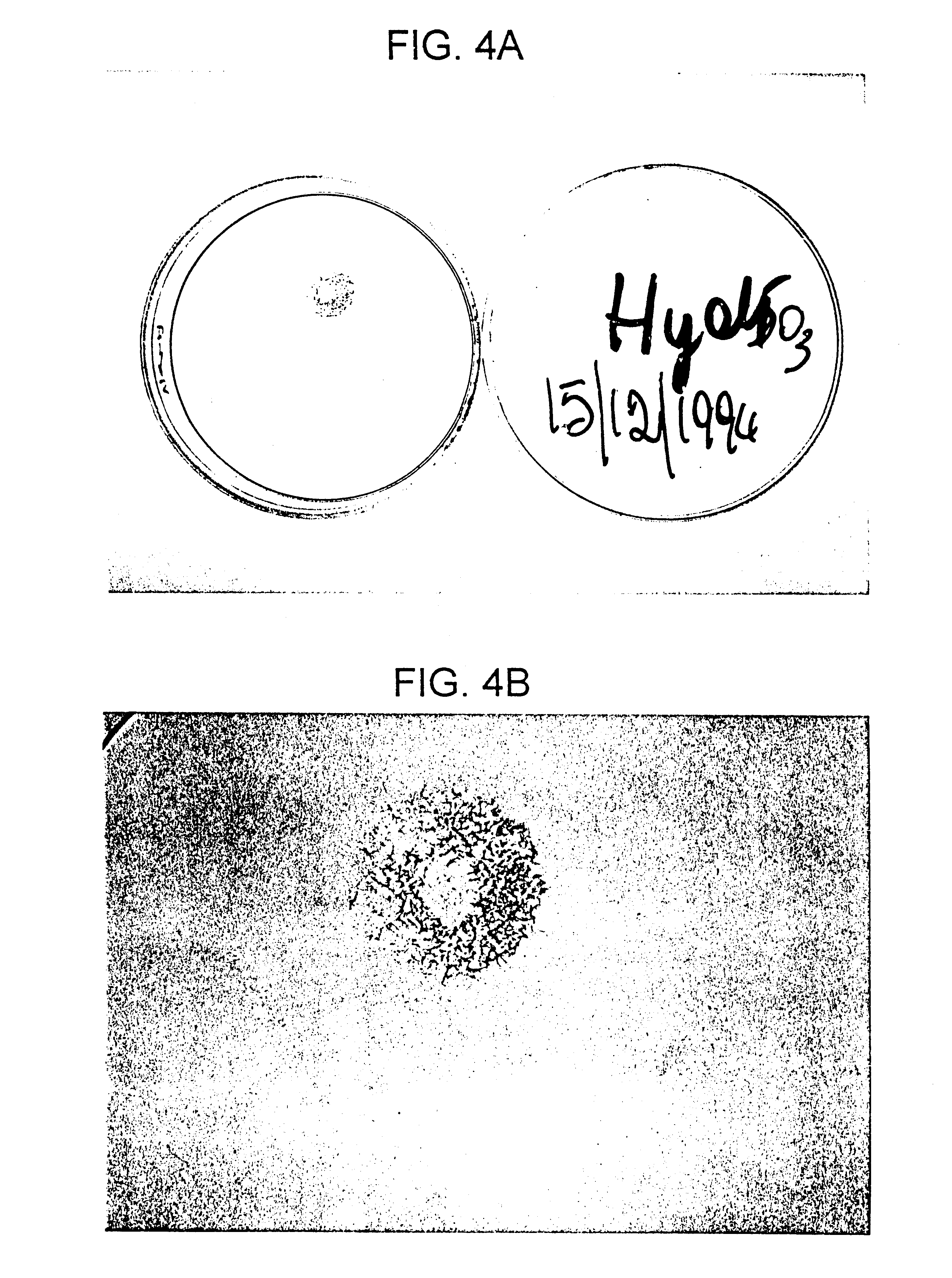Sulfated hyaluronic acid and esters thereof
a technology of which is applied in the field of sulfated hyaluronic acid and esters thereof, can solve the problems of not being able to obtain sulfated polysaccharides, not being completely known, and not being able to achieve simple heparin structur
- Summary
- Abstract
- Description
- Claims
- Application Information
AI Technical Summary
Benefits of technology
Problems solved by technology
Method used
Image
Examples
example 2
Sulfation of Sodium Hyaluronate, Sulfation Degree 3.5
0.250 grams of the tetrabutylammonium salt of hyaluronic acid are solubilized in 10 ml of dimethylformamide (DMF). 2.088 grams of SO.sub.3 -pyridine solubilized in 10 ml of DMF are added to this solution under a flow of nitrogen. The solution is shaken for at least an hour at a temperature of between 4.degree. C. and 0.degree. C. About 200 ml of H.sub.2 O, chilled to 0.degree. C., are subsequently added. The pH of the mixture is brought to a value of between 8.5 and 9.5 by adding 1M sodium hydroxide. The derivative is then precipitated with 120 ml of ethyl alcohol. Anhydrous sodium acetate is added to saturation, and the precipitate is left to deposit for between 1 and 24 hours at a temperature of between 4.degree. C. and 0.degree. C. The precipitate is separated by centrifugation, for example for 15 minutes at 1,500 rpm, solubilized in purified H.sub.2 O, and then dialyzed until all residue reagent and reaction products have been...
example 3
Sulfation of the Partial Ethyl Ester of Hyaluronic Acid: 75% of the Carboxy Groups are in the Form of the Ethyl Ester, Sulfation Degree 3
0.250 grams of the tetrabutylammonium salt of the 75% partial ethyl ester of hyaluronic acid (HYAFF-7p75) are solubilized in 10 ml of dimethylformamide (DMF). 1.305 grams of SO.sub.3 -pyridine solubilized in 10 ml of dimethylsulfoxide (DMSO) are added to this solution under a flow of nitrogen. The solution is shaken for at least an hour at a temperature of between 4.degree. C. and 0.degree. C. About 200 ml of H.sub.2 O, chilled to 0.degree. C., are subsequently added. The pH of the mixture is brought to a value of between 8.5 and 9.5 by adding 1M sodium hydroxide. The derivative is then precipitated with 120 ml of ethyl alcohol. Anhydrous sodium acetate is added to saturation, and the precipitate is left to deposit for between 1 and 24 hours at a temperature of between 4.degree. C. and 0.degree. C. The precipitate is separated by centrifugation, fo...
example 4
Sulfation of the Partial Ethyl Ester of Hyaluronic Acid: 50% of the Carboxy Groups are in the Form of an Ethyl Ester, Sulfation Degree 2.5
0.250 grams of the tetrabutylammonium salt of the 50% partial ethyl ester of hyaluronic acid (HYAFF-7p50, 50% of the carboxy groups esterified with ethanol) are solubilized in 10 ml of dimethylformamide (DMF). 1.044 grams et SO.sub.3 -pyridine solubilized in 10 ml of dimethylsulfoxide (DMSO) are added to this solution under a flow of nitrogen. The solution is shaken for at least an hour at a temperature of between 4.degree. C. and 0.degree. C. About 200 ml of H.sub.2 O, chilled to 0.degree. C., are subsequently added. The pH of the mixture is brought to a value of between 8.5 and 9.5 by adding 1M sodium hydroxide. The derivative is then precipitated with 120 ml of ethyl alcohol. Anhydrous sodium acetate is added to saturation and the precipitate is left to deposit for between 1 and 24 hours at a temperature of between 4.degree. C. and 0.degree. C....
PUM
| Property | Measurement | Unit |
|---|---|---|
| Mass | aaaaa | aaaaa |
| Mass | aaaaa | aaaaa |
| Mass | aaaaa | aaaaa |
Abstract
Description
Claims
Application Information
 Login to View More
Login to View More - R&D
- Intellectual Property
- Life Sciences
- Materials
- Tech Scout
- Unparalleled Data Quality
- Higher Quality Content
- 60% Fewer Hallucinations
Browse by: Latest US Patents, China's latest patents, Technical Efficacy Thesaurus, Application Domain, Technology Topic, Popular Technical Reports.
© 2025 PatSnap. All rights reserved.Legal|Privacy policy|Modern Slavery Act Transparency Statement|Sitemap|About US| Contact US: help@patsnap.com



